I will answer your questions one by one.
But this does not work, all the textfields reset when navigating back
to A. What am I doing wrong?
From FragmentB, when users finish their work and the app call the below method to return FragmentA.
findNavController().navigate(R.id.action_from_B_to_A, dataBundle)
You expected that the app will bring users back to FragmentA, but the actual result is a new FragmentA is created and put on the top of the back stack. Now the back stack will be like this.
FragmentA (new instance)
FragmentB
FragmentA (old instance)
That why you see all textfields reset, because it is a totally new instance of FragmentA.
What is proper way of handling cases like this?
You want to start a fragment, then receive result form that fragment, it seems like startActivityForResult method of Activity.
In Android Dev Summit 2019 - Architecture Components, at 2:43, there is a question for Android developers.
Can we have something like startFragmentForResult for the Navigation
Controller?
The answer is they are working on it, and this feature will be available in future.
Back to your problem, here is my solution.
Step 1: Create a class called SharedViewModel
class SharedViewModel : ViewModel() {
// This is the data bundle from fragment B to A
val bundleFromFragmentBToFragmentA = MutableLiveData<Bundle>()
}
Step 2: Add these lines of code to FragmentA
private lateinit var viewModel: SharedViewModel
override fun onViewCreated(view: View, savedInstanceState: Bundle?) {
super.onViewCreated(view, savedInstanceState)
viewModel = ViewModelProviders.of(requireActivity()).get(SharedViewModel::class.java)
viewModel.bundleFromFragmentBToFragmentA.observe(viewLifecycleOwner, Observer {
// This will execute when fragment B set data for `bundleFromFragmentBToFragmentA`
// TODO: Write your logic here to handle data sent from FragmentB
val message = it.getString("ARGUMENT_MESSAGE", "")
Toast.makeText(requireActivity(), message, Toast.LENGTH_SHORT).show()
})
}
Step 3: Add these lines of code to FragmentB
// 1. Declare this as class's variable
private lateinit var viewModel: SharedViewModel
// 2. Use the following code when you want to return FragmentA
// findNavController().navigate(R.id.action_from_B_to_A) // Do not use this one
// Set data for `bundleFromFragmentBToFragmentA`
val data = Bundle().apply { putString("ARGUMENT_MESSAGE", "Hello from FragmentB") }
viewModel.bundleFromFragmentBToFragmentA.value = data
// Pop itself from back stack to return FragmentA
requireActivity().onBackPressed()
